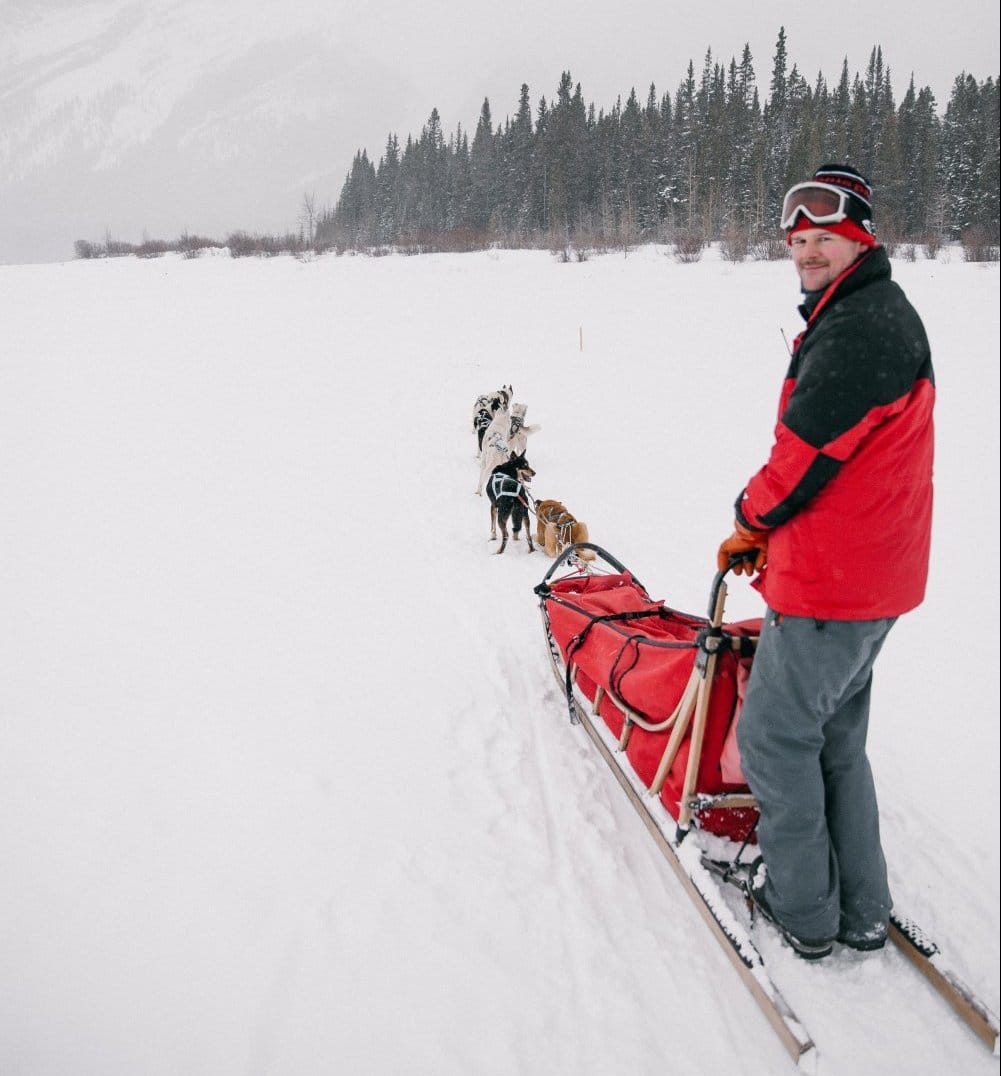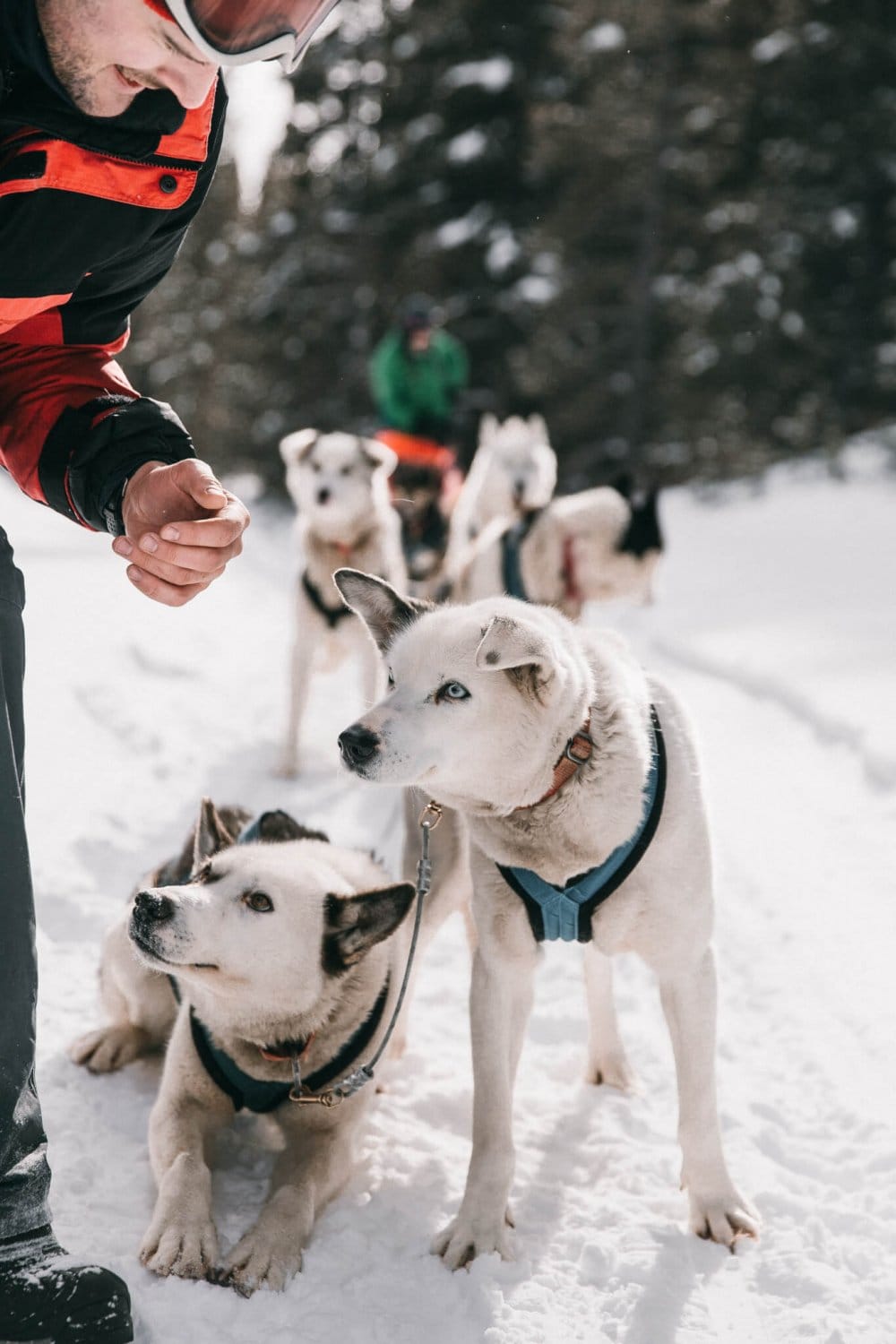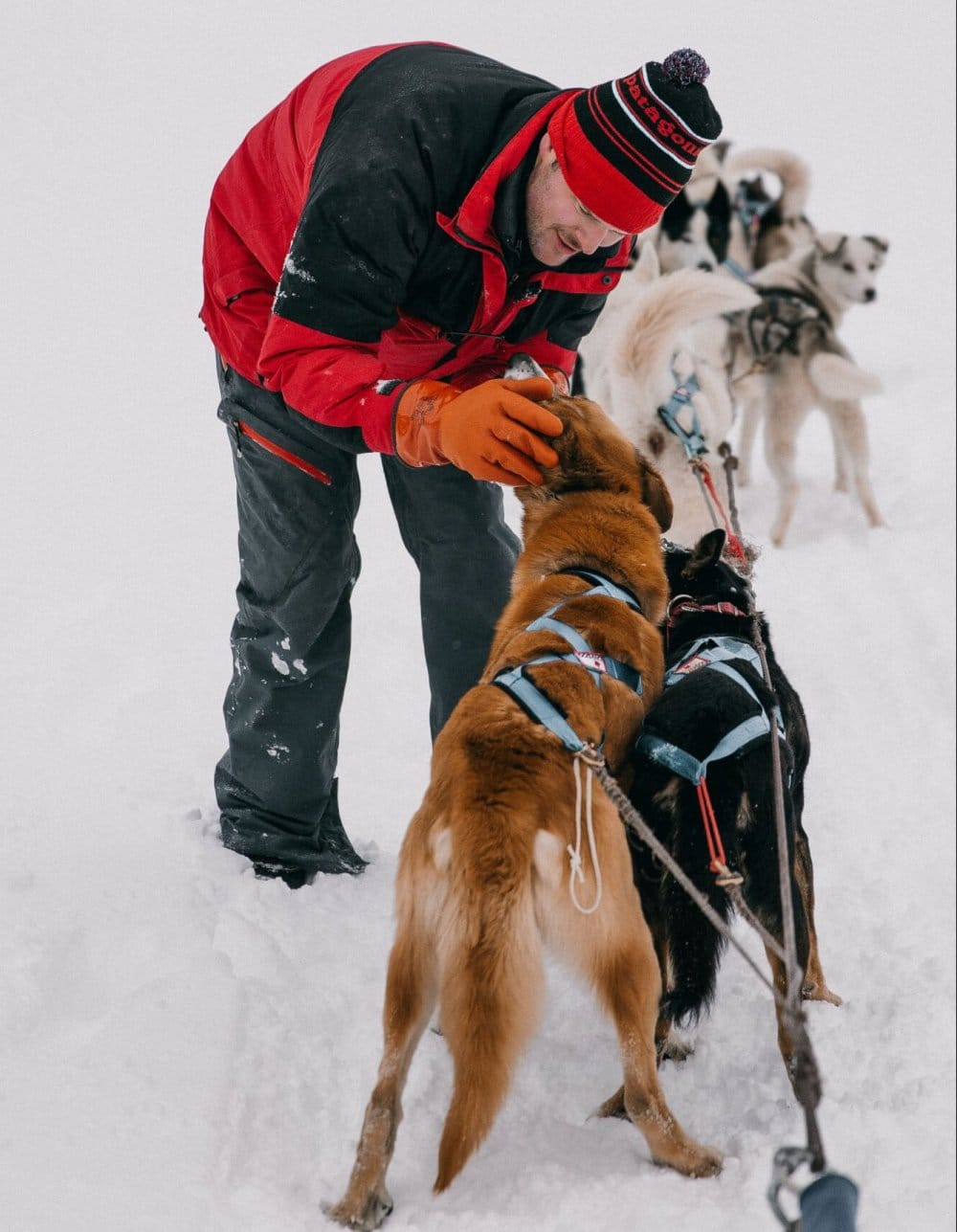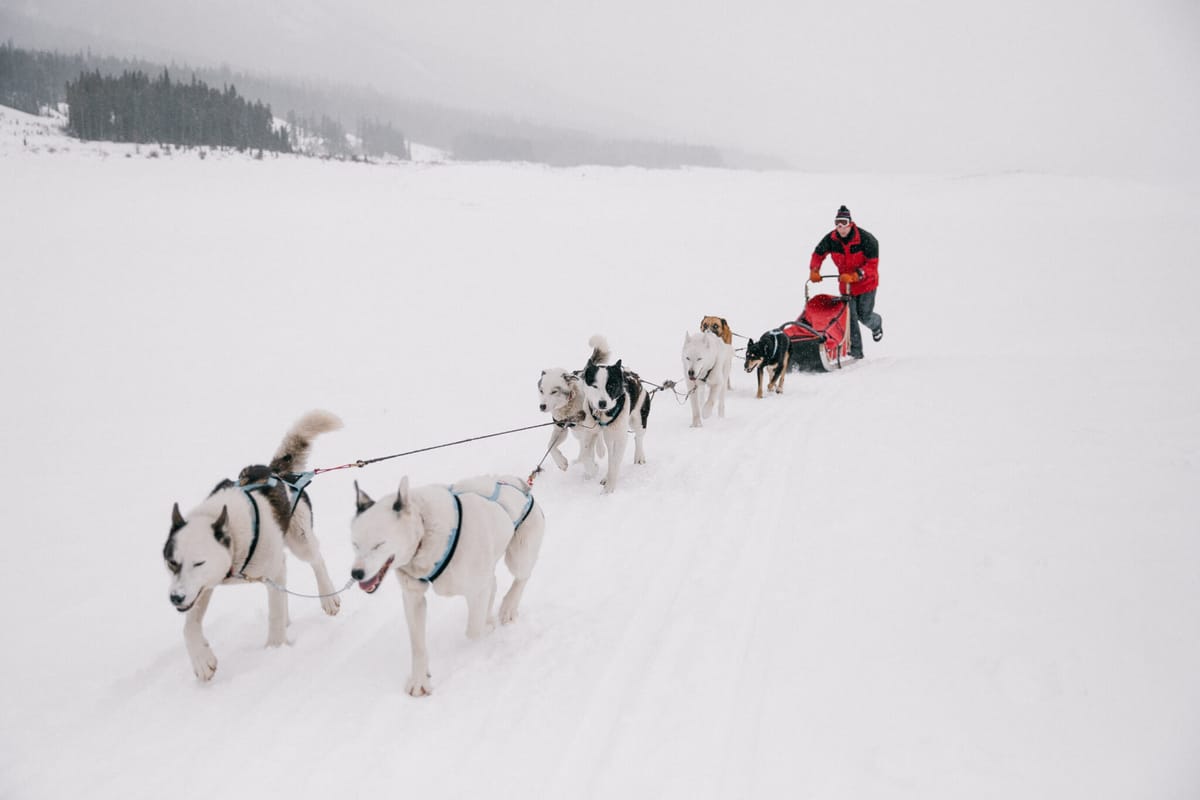Six Alaskan huskies pant excitedly as they haul a red sled carrying Russell MacKay across a vast frozen lake in Canada. The dogs’ paw prints dent fresh white snow coating two foot of ice. Their breath rises into the frigid minus 20 degree air.
The jagged, ice-capped peaks of the Rocky Mountains tower above the lake, their slopes hidden beneath pine trees.
Russell stands, steering the sled – while an excited tourist sits in front of him, shielded from the elements by a canvas cover.
The former Gore-based Waitane Young Farmers member moved to Canmore, which is one of the highest-altitude towns in Canada, last November.

“It’s been a bit of a shock. I’ve never seen so much snow in my life,” laughed Russell, who’s travelling with his girlfriend Georgia Russell.
“We spent a few months in Asia first. We went from days where the temperature was a scorching 38 degrees celsius, to here where it can plummet to minus 38 degrees celsius.”
But the bone-chilling temperatures aren’t as cold as they appear.
“It does get bitterly cold here, but the air is so dry, it’s not as bad as it sounds. It can feel a lot colder when the wind whips off the duck pond in Gore,” he said.

“Life still goes on in Canmore when it’s really cold. You’ll often see people out running when it’s minus 25 degrees celsius.”
Russell and Georgia had always been keen on living in Canada, before settling down in New Zealand.
“I really wanted to work as a dog sled guide or musher. I couldn’t think of anything more fun,” said Russell, who’s a former agri business manager with Westpac.
The 27-year-old applied for a few jobs in Canmore. He was hired by Mad Dogs and Englishmen Expeditions.
“I thought it would be harder to find a job than it was,” he said
The company has about 100 dogs. It runs guided dog sled tours at Spray Lake, which flanks the Banff National Park.
The lake freezes over, offering a winter playground with spectacular mountain vistas.
“We also have longer tours which weave through pine forest and we’ll set up a campfire and cook a meal for customers.”

“For us to go out on the lake the ice has to be eight inches and at the moment it’s two feet thick,” he said in March. “There’s no way we’re going to fall through it.”
“There are often fishermen on the lake who drill holes through the ice to access the water below. We always ask them how thick it is.”
Tourists descend on the region from across Canada – and the world – to experience the adrenaline-pumping adventure of dog sledding.
“Our busiest day was when we ran back-to-back tours for students from a Japanese high school. We had eight sleds out on the ice at once,” he said.
The business is based 45-minutes north of the lake. Dogs and sleds have to be driven to the site.
“It’s a daily juggling act figuring out which dogs will make up your team and most importantly their running order. The boss needs a spreadsheet to work it all out,” he laughed.
The dogs, like most animals, have their unique quirks and personality traits and can hold a grudge for months.
“We generally don’t run siblings beside each other because they will fight. Sibling rivalry is intense,” he said.
“If two dogs have had a scrap, they will remember it for months and next time they’re within arm’s reach of each other will fight again.”
“About two thirds of the dogs are female, which causes problems when they’re on heat,” he said.
The dogs can be picky about their place in front of the sled and like to be harnessed into their preferred spot.
“You’ll often find it’s only the confident dogs who’re willing to be at the front,” he said.
“Certain dogs will only run in the middle of the pack. They like to be surrounded by other dogs.”
“Some dogs hate having the sled right behind them and won’t run in that spot. They think it’s going to hit them when you go downhill,” he said.
Russell believes a six-month stint working at the historic Walter Peak Station near Queenstown helped him land the job.
“We’d have 200 customers arrive by boat each time the TSS Earnslaw docked from Queenstown,” he said.
“I’d wear a microphone and do a shearing demonstration and a dog show for the tourists.”
“Being off a farm and having worked with dogs before in an agri-tourism business was definitely beneficial,” he said.
When we caught up with Russell in March the mercury was starting to rise, triggering the beginning of the spring thaw.
“You can hear the animals coming back to life. There are more birds around and the first grizzly bear has been seen coming out of hibernation,” he said.
“I take bear spray with me everywhere. It’s kind of like a hefty version of pepper spray.”
“I’ve only seen one grizzly since I arrived and he’s quite famous. He’s massive and is always the last to go into hibernation every year,” he said.
Cougars and wolves also stalk the area.
“You’ll know if a wolf has been on one of the trails because the dogs pick up on the scent and the hairs stand up on the back of their necks,” he said.
“But you’re more likely to die from the weather, than be attacked by a cougar or bear.”
Once the snow melts and the dog sledding season grinds to a halt, Russell will work as a builder in Canmore.
“Canmore is a really desirable place to live, it’s a bit like Queenstown and Wanaka,” he said.
“It’s also just as expensive. Rents are high and groceries are expensive. Once a month we’ll drive into Calgary or Cochrane to do a big supermarket shop.”
In late August, Russell plans to head northeast to Saskatchewan.
“I’ve got a mate from Lincoln University who’s lived on a 4856 hectare grain farm up there for three to four years,” he said.
“I’ll help with the harvest and do a bit of fencing before returning to Canmore to see out the summer working as a builder.”
Once the first snow starts to fall, the couple will be ready to pack up and begin their journey home to New Zealand, possibly via Australia to do another harvest.
“I’d like to go farming when I get home,” he said.
Russell’s family farm in Gore has grown to 560 hectares while he’s been travelling.
“Dad was saying he bought 1100 breeding ewes last week,” he said.
The larger property will have 4800 ewes (including 500 stud ewes), 1200 ewe hoggets, 120 ram hoggets, 50 rams and 150-200 trading cattle.
Russell has a Bachelor of Commerce (Agriculture) majoring in farm management from Lincoln University.
It’s likely the former chair of Waitane Young Farmers will return to the club to rekindle old friendships.
“NZ Young Farmers has previously been great for me. I joined up because I’d lived away from home for so long I didn’t know anyone and thought I’d better make some mates,” he laughed.
Connections made in New Zealand have helped open the door to opportunities which will leave lasting memories.

